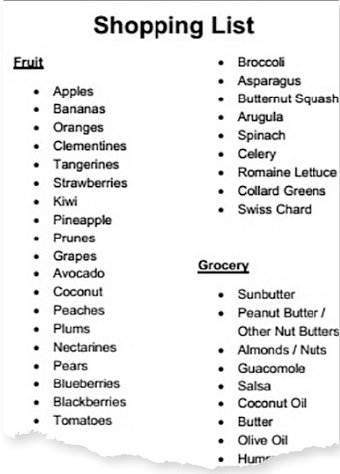
A Successful Home Delivery Depends on a Detailed List

Remember the restaurant scene in “When Harry Met Sally” in which Sally (Meg Ryan) specifies how she would like her pie? It’s intended as a glimpse into the entitled and inflexible aspects of her character, and we are meant to judge her for it.
Well, Sally wasn’t ordering during a pandemic. But if she had ordered via home delivery at Weavers Way, we would not judge her, and we would appreciate how specific she was.
A well-drafted shopping list makes a significant difference in the amount of time it takes us to pull your order. If it takes more than half an hour to pull, and most do, the delivery fee of $7 and the curbside fee of $5 do not cover the cost of the labor — and that is just one component of the costs of providing this service.
Sometimes we shoppers call because there’s too much guesswork or too many questions created by a list. I enjoy talking to my person, but it adds time, and time is money. So here are some tips for making a better list, so that we don’t call you and can improve your odds of getting what you want.
- To substitute or not to substitute; that is the question. There is a question at the beginning of the online order form as to whether you will accept close substitutions. While this question applies to your whole order, you can indicate specific items for which you do or do not want a substitute. For example, if you request organic or non-organic, tell us if this is an absolute or preferred.
- Also, when specific brands or flavors matter to you, let us know, and use information from the label to guide us.
- Assume items on your list are not on the shelf and provide us with a second and maybe even a third choice. This is especially important when it comes to cuts of meat, cheeses, ice cream flavors and artisan bread. While we’re on the subject of bread, do you want sliced, unsliced or either?
- Organize your list as if you were moving through the store and trying to minimize your steps. Visualize the store and organize the items within categories as you would find them.
One order I had was structured like this and because of it, I was able to find polenta easy peasy. I could have thought of five places to look, but my orderer knew where it was and had it listed among the other items on those shelves. If you don’t know the layout of the store you are ordering from, not to worry. But if you do, please SOS (Save Our Steps).
- If size matters to you, give us guidance. Small/medium/large works for some items but in many cases is ambiguous. When it comes to meat or fish, weight works, and so do dollar ranges.
- For some things like produce, you might not have any idea of weight, but other descriptors work, for example, four large yams, or three handfuls of string beans.
- For bulk items, weight works, as do measuring cups and ounces, but “half a bag?” Not so good. Which bag? For spices, some people ask for “a cup.” That’s a lot of spice. Did you mean a scoop?
- When you choose your size descriptors, think about whether they are clear, and how they might be misinterpreted. One member asked for “one thingy” of practically everything he had on his list; you know who you are. And it worked!
- If you are ordering large quantities, consider pre-ordering. (Hint: If your list says “a case of,” that’s a pretty good indication that pre-ordering is justified.) We understand that you are attempting fewer and larger shops, but ordering large quantities wipes out stock for other members unless we have advance notice. This applies to bulk items as well.
- Feel free to elaborate and annotate. The best lists are those that flow like a conversation.
- Label color and location advice can help. The labels on canned cat food are impossible to read even with reading glasses and a magnifying glass. But if you tell us the can has a hot pink label, we are off to the races.
- If you are asking for an esoteric item and you know where it is, please share your knowledge. Pickled lemons? On the deli counter above the smaller cheese case.
- Before you hit send, proofread your order. Typos wreak havoc, and especially when it comes to quantities.
- Lastly, if your shopper wrote notes on your list, please take time to review their comments to understand why they did what they did. It will likely help you improve your list the next time.
